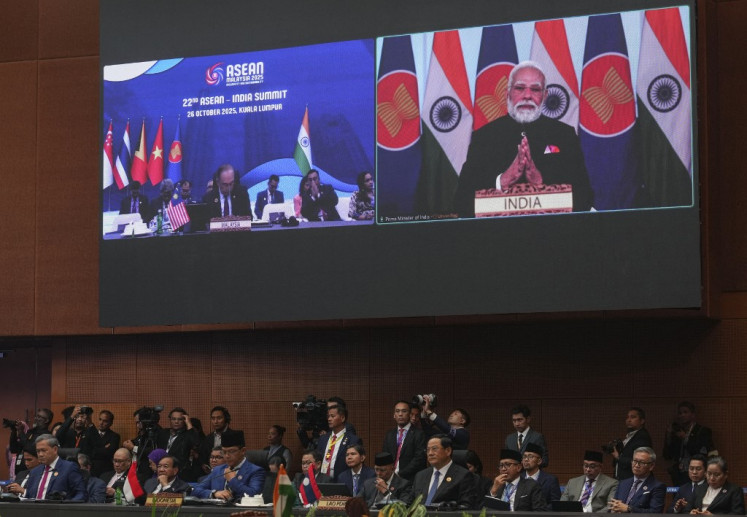Popular Reads
Top Results
Can't find what you're looking for?
View all search resultsPopular Reads
Top Results
Can't find what you're looking for?
View all search resultsWhat a China-EU climate deal could do for the world
Chinese green-tech leadership has created an opportunity that the world cannot afford to squander. Europe must work with China to realize that potential.
Change text size
Gift Premium Articles
to Anyone
O
ne typically hears two stories about China and climate change. The first is that China leads the world in greenhouse-gas emissions as it continues to build more coal-fired power stations. The second is that China leads the world in developing clean technologies that will allow all countries to decarbonize their economies at a far lower cost than seemed possible five or ten years ago.
Both stories are true, and policy in China and the rest of the world must reflect that reality. In 2022, China emitted 15.7 gigatons of greenhouse gases, far more than the United States' six Gt or the European Union’s 3.6 Gt. While these absolute figures reflect China’s much larger population, its per capita emissions, at 11 tons, greatly exceed the EU’s 8.1 tons and the United Kingdom’s 6.3 tons, moreover, the latter two are on track to fall below 2 tons by 2040.
China has committed to achieve peak emissions by 2030 and net-zero by 2060, but this still implies that its cumulative carbon dioxide emissions between now and 2060 could be around 250 Gt. By contrast, current commitments from the UK and the EU imply about 4.5 and 45 additional Gt, respectively. Those 250 Gt alone would use up much of the world’s remaining “carbon budget” that can be emitted while still limiting global warming to “well below 2°C,” as agreed in the 2015 Paris climate agreement. That means average planetary temperatures in 2100 will be hugely influenced by what China does, and minimally by the EU or the UK.
Around 5.9 Gt of China’s annual emissions come from a power system that remains dominated by coal, and China plans to add 280 gigawatts of coal-power capacity by 2029. Moreover, emissions from its massive steel and cement sectors exceed 50 percent of the global total, though they are beginning to fall as construction declines.
But China is also the global leader in five key “green” technologies: solar photovoltaics, wind turbines, batteries, electric vehicles and heat pumps, whose deployment could replace three-quarters of global fossil-fuel use and related emissions. EVs now account for almost 50 percent of all passenger car sales in China, versus 23 percent in the EU and more than 10 percent in the US and electricity meets 32 percent of its final energy demand, versus 24 percent in Europe and the US.
In 2024, China installed around 400 gigawatts of solar and wind power, over half the global total. While its coal capacity is still growing, these facilities are increasingly used as a flexible backup for renewables, with total power sector emissions falling 3 percent in the first half of 2025.
China’s massive clean-tech deployment has brought huge cost reductions and performance improvements. Solar PV costs per watt have fallen 90 percent in 15 years, while production yields have increased. Battery costs per kilowatt-hour also have plummeted, while energy density and charging speeds continually improve. Such progress enables much faster emissions reductions, not only in China but around the world.



















